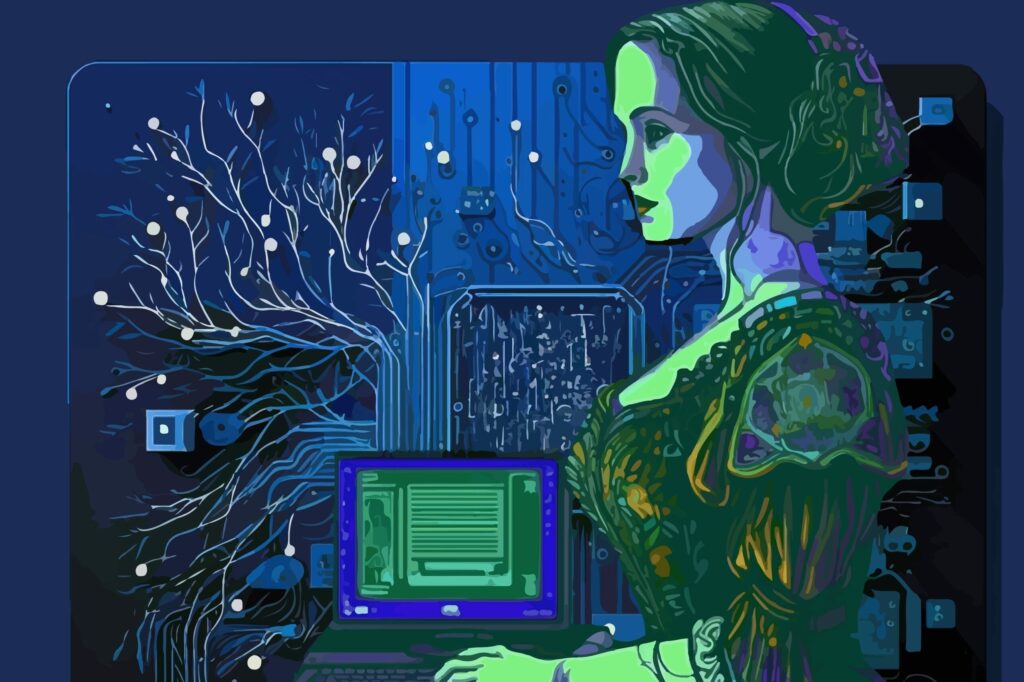
Tuesday 10th October marks Ada Lovelace Day, an annual celebration of women’s achievements in science, technology, engineering and mathematics (STEM).
Ada Lovelace Day serves to remind us that the lack of gender diversity in the STEM industry is an ongoing issue – with women still holding less than a fourth (24%) of technology leadership roles.
Young girls need role models to look up to, and successful women can inspire them to enter and succeed in this male-dominated industry. In fact, Ada Lovelace was one of these role models. As an English mathematician and writer – often referred to as “the first programmer” – she played a crucial role in revolutionising the trajectory of the computing industry.
In addition to creating a more gender balanced tech workforce, improving female representation in STEM is key to closing the ongoing digital skills gap. As businesses continue to accelerate their digital transformation strategies, employers are struggling to fill tech roles. By encouraging more women to enter the STEM industry, the technology industry will expand the talent pipeline, narrow the skills gap and boost innovation and growth.
To mark the day, several female leaders in STEM shared their insights on the topic.
The concerning lack of female representation in tech
For Mary-Christine Nolan, VP of Global Professional Services at Pluralsight, “a lack of diversity is hampering the technology sector and compounding the skills gap. Women still make up just 28% of the workforce, and at the same time, almost all employers in the UK have experienced skills shortages in the last 12 months. High levels of competition, combined with a small pool of talent – especially women – will continue to stifle growth and innovation if we do not see change.”
This view is echoed by Stacey Moser, Chief Commercial Officer at Universal Robots, who says: “Without a diverse workforce, engineering and technology industries are being held back. Although we’re slowly moving in the right direction, the gender gap in STEM remains significant.”
One such industry suffering significantly at the hands of the imbalance is quantum computing. According to Fortinet’s Barbara Maigret, Global Head of Sustainability: “Recently quantum computing has become a major concern in the cybersecurity industry, but this is a space hugely dominated by men, with females making up only 24% of the workforce. To boost females in STEM, there needs to be more education into the careers available and the entry points. Girls need to be shown from a young age what opportunities are out there, as only 3% of women have reported that a career in technology was their first choice.”
Encouraging a broader range of perspectives to narrow the skills gap
A diverse workforce will not only help to close skills gaps, but will also go a long way towards driving innovation with new ideas and perspectives. This is particularly pertinent in cybersecurity. “Not all hackers are male and if we don’t actively attract women, we are missing out on the diversity of perspectives needed to overcome ever-evolving threats,” argues Renske Galema, Area Vice President Northern Europe at CyberArk.
“There is a huge scarcity of talent in cybersecurity, arguably more than other fields in the technology sector, and if we limit our talent pools to less than half of the global population, we’re doing ourselves a disservice”.
The rise of AI has also brought to light the need for greater gender diversity in the workplace. Working in the male-dominated sector of aerospace and defence, Sue-Ellen Wright, Managing Director of Aerospace, Defence and Security at Sopra Steria, says: “Like many other sectors, ours is being profoundly impacted by new technologies such as AI, which will change the way our armed forces operate. AI-assisted tooling will enable quick and automated analysis and decision-making. However, the coding around these tools is incredibly complex, and the government’s plan to modernise our armed forces is jeopardised by the ongoing skills gap.
“Failure in the defence industry could be a life-or-death issue. Better gender diversity will be integral to our success in designing and deploying AI tools for the best outcomes.”
Claire Montgomery, Senior Director, Software Engineering at G-P, believes that building a diverse network is transformative.
“It empowers us to create a genuinely global and inclusive workplace in the tech industry, one that not only reflects the diverse world we live in but also harnesses the unique perspectives offered in different regions.
“These viewpoints are not just a matter of better representation for women, they help us think more like our customers and partners, more effectively problem-solve, and have a much greater business impact. Ultimately, this fuels innovation and collectively shapes the future of the tech industry for the better.”
Education will help young girls build the right skills and expertise
If we are to encourage more women into the industry, we must also begin to inspire female talent from a young age. “As a woman who studied electrical engineering and now works at a robotics company, I really like to consider the legacy we’re leaving both at work and home”, adds Moser.
“We must ensure that the next generation of women have the skills and confidence needed to drive technology innovation. Increasing the visibility of female role models and earmarking change at grassroots level, especially in education, will be critical to this.”
Nolan echoes the point: “We have a responsibility to increase access to education so young people can build specialist skills and enter the workforce. This is important in the classroom, but also through apprenticeships, for instance, which are a great way to learn skills on the job.
“In such a male-dominated industry, women should not be dissuaded by feeling like they lack the expertise for a role in tech. Continue learning and building your confidence, while finding like-minded women to share experiences with along the way.”



